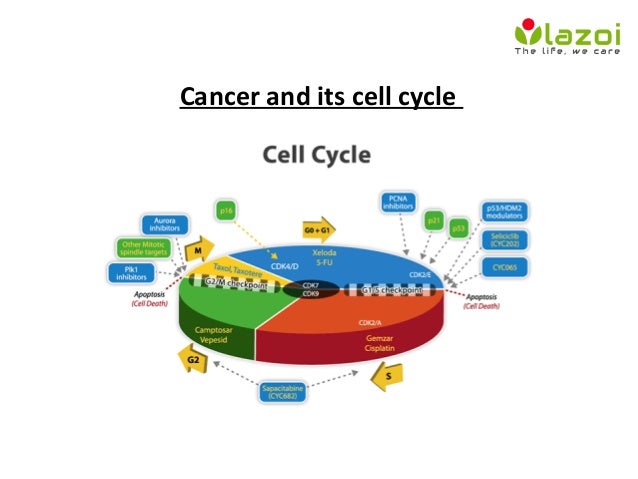Cancer and its cell cycle Biology Diagrams
Cancer and its cell cycle Biology Diagrams In this article we will discuss about the Cell Cycle and Cancer:- 1. Introduction to Cell Cycle 2. Regulation of the Cell Cycle 3. Regulators 4. Growth Factors and the D-Type Cyclins 5. Inhibitors 6. Involvement of Oncogenes and Anti-oncogenes. Contents: Introduction to Cell Cycle Regulation of the Cell Cycle Regulators of Cell Cycle Progression Growth Factors and the D-Type Cyclins Inhibitors Cancer is a group of diseases in which cells divide continuously and excessively. Cell division is tightly regulated by multiple evolutionarily conserved cell cycle control mechanisms, to ensure Cancer is a group of diseases in which cells divide continuously and excessively. Cell division is tightly regulated by multiple evolutionarily conserved cell cycle control mechanisms, to ensure the production of two genetically identical cells. Cell cycle checkpoints operate as DNA surveillance mec …

Learn how the cell cycle regulates cell growth, division, and DNA replication, and how errors in the cycle can lead to cancer. Find out how chemotherapy, radiation, and targeted therapies affect the cell cycle and treat cancer cells. Superficially, the connection between the cell cycle and cancer is obvious: cell cycle machinery controls cell proliferation, and cancer is a disease of inappropriate cell proliferation. Fundamentally, all cancers permit the existence of too many cells. However, this cell number excess is linked in a vicious cycle with a reduction in The "Cell Cycle Regulators and Cancer" view explains the protein regulators, their roles in cell cycle progression, and how mutated versions can lead to cancer. This view may be more appropriate for AP/IB Biology and introductory college biology.

The cell cycle and cancer Biology Diagrams
CELL CYCLE AND CANCER. In cancer, there are fundamental alterations in the genetic control of cell division, resulting in an unrestrained cell proliferation. Mutations mainly occur in two classes of genes: proto‐oncogenes and tumour suppressor genes. In normal cells, the products of proto‐oncogenes act at different levels along the pathways Cancer is the result of unchecked cell division caused by a breakdown of the mechanisms that regulate the cell cycle. The loss of control begins with a change in the DNA sequence of a gene that codes for one of the regulatory molecules.

Deregulation of the cell cycle underlies the aberrant cell proliferation that characterizes cancer and loss of cell cycle checkpoint control promotes genetic instability. During the past two decades, cancer genetics has shown that hyperactivating mutations in growth signalling networks, coupled to loss of function of tumour suppressor proteins
